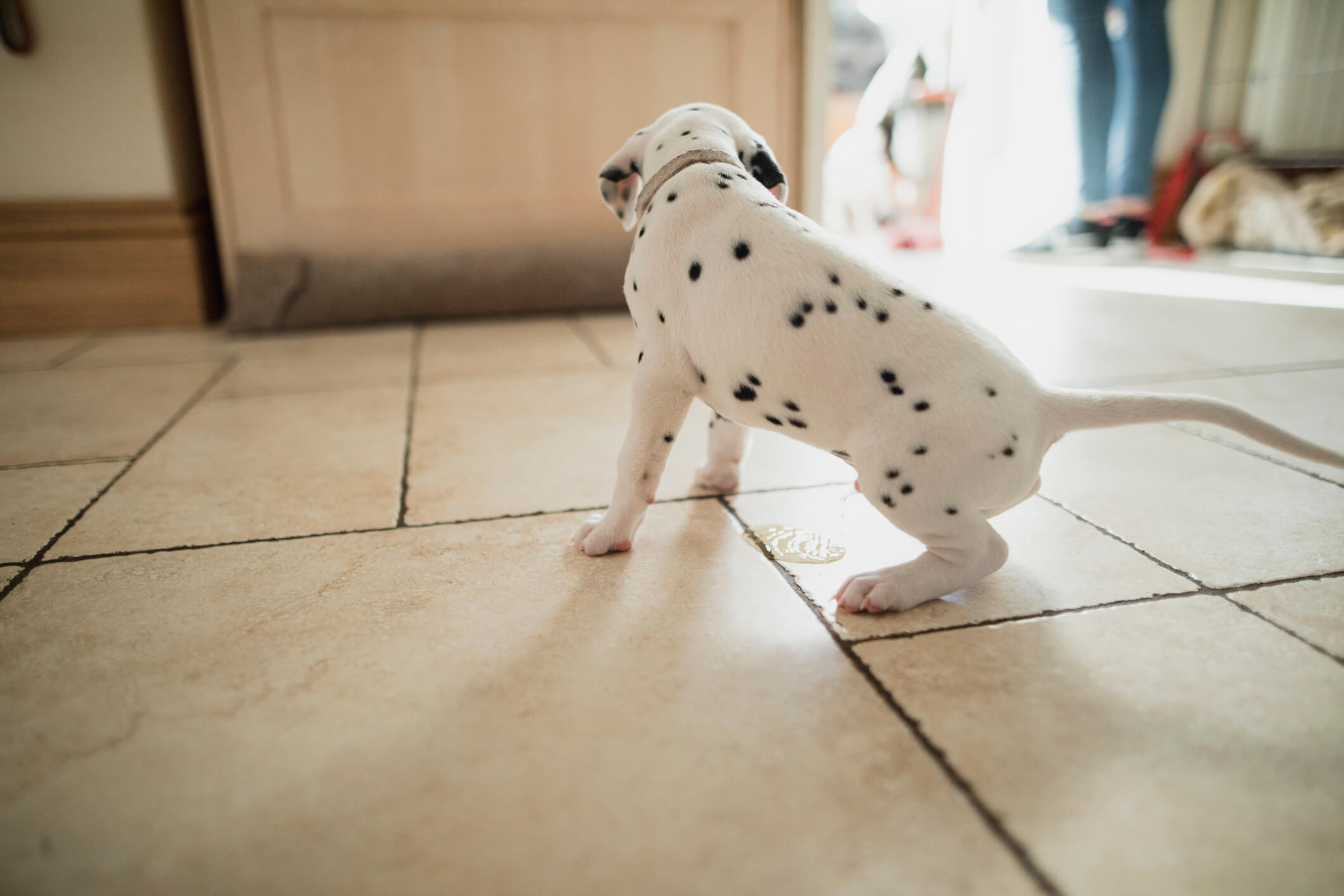
Potty Training Puppies: Tips and Problems to Watch For
Having a new puppy in the house is extremely exciting. Adorable puppies offer companionship and fun and can even reduce stress. However, there are some growing pains or adjustments that come along with raising a young dog—namely proper potty training.
It’s important to remember that potty training takes time, and there are sure to be plenty of accidents along the way. To make sure your puppy’s potty training is successful, check out these helpful tips.
Create a schedule
One of the best ways to teach a dog to only use the bathroom outside is by creating a schedule. A good rule of thumb is to take your puppy out first thing in the morning and every few hours throughout the day. It’s smart to get them used to going out after each meal and after playtime. End each day with one final trip outside before your puppy goes to bed.
The right potty schedule can vary from puppy to puppy, so this might take a lot of trial and error. Once you find a schedule that works for your pup, though, stick to it so your dog learns.
Crate training
Many pet parents see crate training as an essential part of the potty-training process. This involves keeping your puppy in a crate at night to prevent them from wandering around the house and possibly getting into trouble.
Keeping your pup in a crate at night will also teach them to hold their bladder until the next morning and discourage them from soiling their “living space.” A crate can also be used during the times you’re not home to take your puppy outside, like your workdays, while your puppy is still learning and growing.
Be observant
Keep an eye on your puppy’s behavior patterns throughout the day. If they start getting antsy or sniffing in one particular spot, then it’s probably time to take them out. This is especially true if your puppy has gone to the bathroom in that spot before.
Since your puppy will surely have accidents at some point, you’ll probably have an idea of where they like to use the bathroom. If you notice them approaching these areas in the house, then take them outside or to a puppy pad. Also watch for potty-time “tells” your pet has; the sooner you learn these, the easier it will be for your pet to communicate that they need to head outside.
Use puppy pads
Puppy pads are a popular training tool that can be purchased at any pet supply store. These pads can be placed in your bathroom, garage or any other area that you’d prefer your puppy use as a temporary bathroom spot. Puppy pads are a great option if your young dog has accidents at night. They can also be useful during the winter months when it might be a little too chilly to take your dog out.
Offer plenty of praise
One of the most important aspects of proper potty training is making sure that your puppy gets plenty of praise. In fact, positive reinforcement is important when teaching your puppy anything! You can use healthy treats as a reward for your puppy’s successful bathroom trips. The best treats will have your puppy always wanting to earn more.
Common potty-training problems

There are plenty of problems that might occur while you’re potty training your puppy. It’s important that neither you nor your furry friend get discouraged when accidents happen. Common problems during the potty-training process could include:
- Refusal to go outside
- Frequent accidents
- Using the bathroom in their crate
- Stains on carpets
- Distractions during potty time
The most important thing to remember is that you should never punish your puppy after an accident. Negative reinforcement never works and could cause emotional distress—and even more accidents. If your puppy is having trouble potty training, it’s important to understand what you could be doing to help them. Are you taking them out frequently enough? Having you been giving them too much or not enough water? Are you being observant of your puppy’s potty time behaviors? Consider where you can help your puppy, so they learn faster.
Watch for health problems while potty training
One final thing to remember while potty training your puppy is that you should continue to keep an eye out for urinary or digestive problems. Many bladder issues, in particular, might be overlooked during the potty-training process.
Frequent urination might be attributed to your pup’s tiny bladder, but they still shouldn’t strain or appear to be in pain while urinating. If you notice them having difficulty urinating or any blood in the urine, take your pup to the vet right away.
Additionally, watch your puppy’s stool to make sure it’s the right color and consistency. Although puppies might experience diarrhea for a day or two after switching foods, it shouldn’t be a persistent problem.
In the end, it will take time to get potty training right, but the result will be great for both you and your puppy. Potty training is an important part of bonding with your pet and can help you establish a great relationship for the rest of their life!


